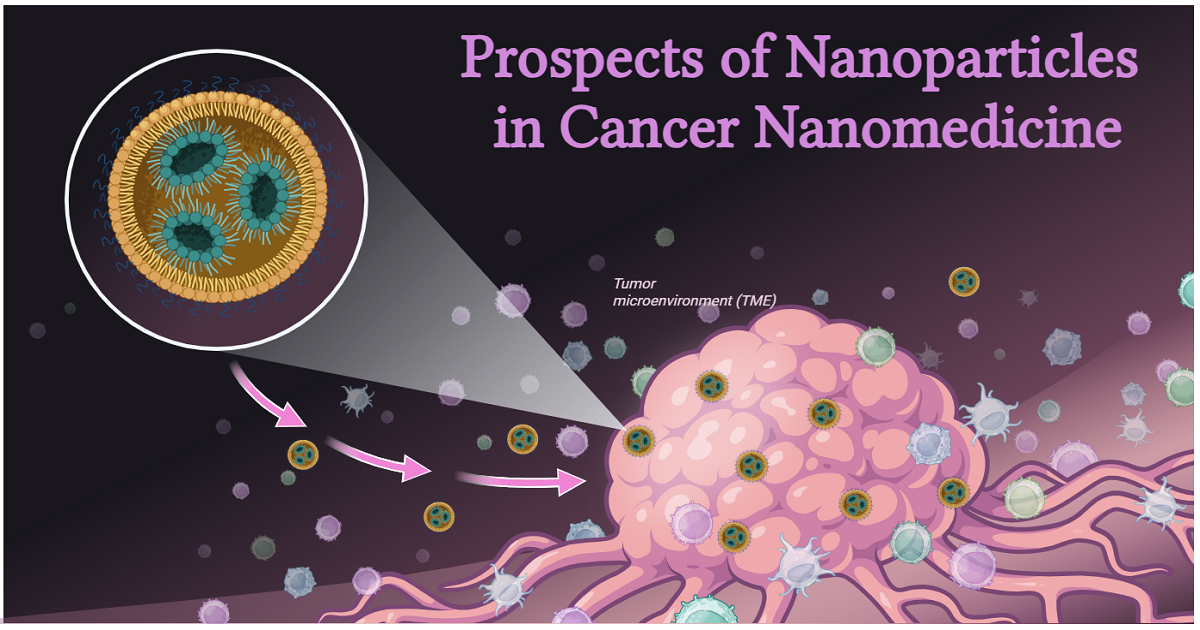Prospects of Nanoparticles in Cancer Nanomedicine
A special issue of Materials (ISSN 1996-1944). This special issue belongs to the section "Advanced Nanomaterials and Nanotechnology".
Deadline for manuscript submissions: 10 June 2024 | Viewed by 1076

Special Issue Editors
Interests: immunology; nanotechnology; cancer research; materials engineering
Special Issue Information
Dear Colleagues,
The juncture of nanotechnology and medicine gave rise to the field of ‘nanomedicine’ in the archetypal form of nanoparticles carrying drug molecules, which quickly became one of the most intriguing, but also controversial, branches of a new science. Nanoparticle-based nanomedicine can be broadly defined as the branch of medicine that makes use of nanotechnology for disease prevention, monitoring, and intervention through new modalities for imaging, diagnosis, treatment, repair, and regeneration of biological systems. A first unique attribute of nanomedicines is the ability to modulate the distribution of a payload, resulting in improved bioavailability with increased deposition at the biological target and diminished systemic toxicity. Another unique attribute of nanomedicines is their ability to create a ‘nanoenvironment’ providing the necessary solubility, stability and protection to the selected payload.
Nanomedicine holds the potential to improve anticancer therapy and diagnosis. Despite the approval of several nanomedicinal anticancer drugs, such as Onivyde (liposomal irinotecan) and Vyxeos (liposomal daunorubicin plus cytarabine), the success rate of clinical translation remains relatively low. As of 2021, only 14 systemically administered cancer nanomedicines had been approved for clinical use worldwide. No actively targeted or stimulus-responsive cancer nanomedicine has yet been granted regulatory approval, while some are among the >50 anticancer nanoformulations currently undergoing early stages—phase I or II—of clinical trials. Why have so few nanomedicines entered the marketplace?
A batch of problems need to be addressed: How does the nanomaterial composition influence in vivo stability? How do nanoparticles travel through the body? Where do they accumulate? Can we affect the fate of nanomaterials by engineering their surface chemistry? What is the fate of systemically administered nanoparticles? Can we improve their targeting to sites of interest by anchoring specific bioreceptors to the nanoparticle surface? How do we evaluate the long-term toxicity of nanoparticles?
Hot topics to be covered by this Special Issue include the following:
- Synthetic protocols for nanoparticles for cancer nanomedicine;
- The biodegradable design of nanoparticles;
- The biocompatibility of nanoparticles including blood and tissue;
- Nanoparticles for cancer therapy;
- Nanoparticles for cancer imaging;
- The interaction between nanoparticles and bio-interface.
Dr. Wensheng Xie
Prof. Dr. Lingyun Zhao
Guest Editors
Manuscript Submission Information
Manuscripts should be submitted online at www.mdpi.com by registering and logging in to this website. Once you are registered, click here to go to the submission form. Manuscripts can be submitted until the deadline. All submissions that pass pre-check are peer-reviewed. Accepted papers will be published continuously in the journal (as soon as accepted) and will be listed together on the special issue website. Research articles, review articles as well as short communications are invited. For planned papers, a title and short abstract (about 100 words) can be sent to the Editorial Office for announcement on this website.
Submitted manuscripts should not have been published previously, nor be under consideration for publication elsewhere (except conference proceedings papers). All manuscripts are thoroughly refereed through a single-blind peer-review process. A guide for authors and other relevant information for submission of manuscripts is available on the Instructions for Authors page. Materials is an international peer-reviewed open access semimonthly journal published by MDPI.
Please visit the Instructions for Authors page before submitting a manuscript. The Article Processing Charge (APC) for publication in this open access journal is 2600 CHF (Swiss Francs). Submitted papers should be well formatted and use good English. Authors may use MDPI's English editing service prior to publication or during author revisions.
Keywords
- cancer nanomedicine
- nanoparticle
- biodegradability
- biocompatibility
- nano-biointerface






